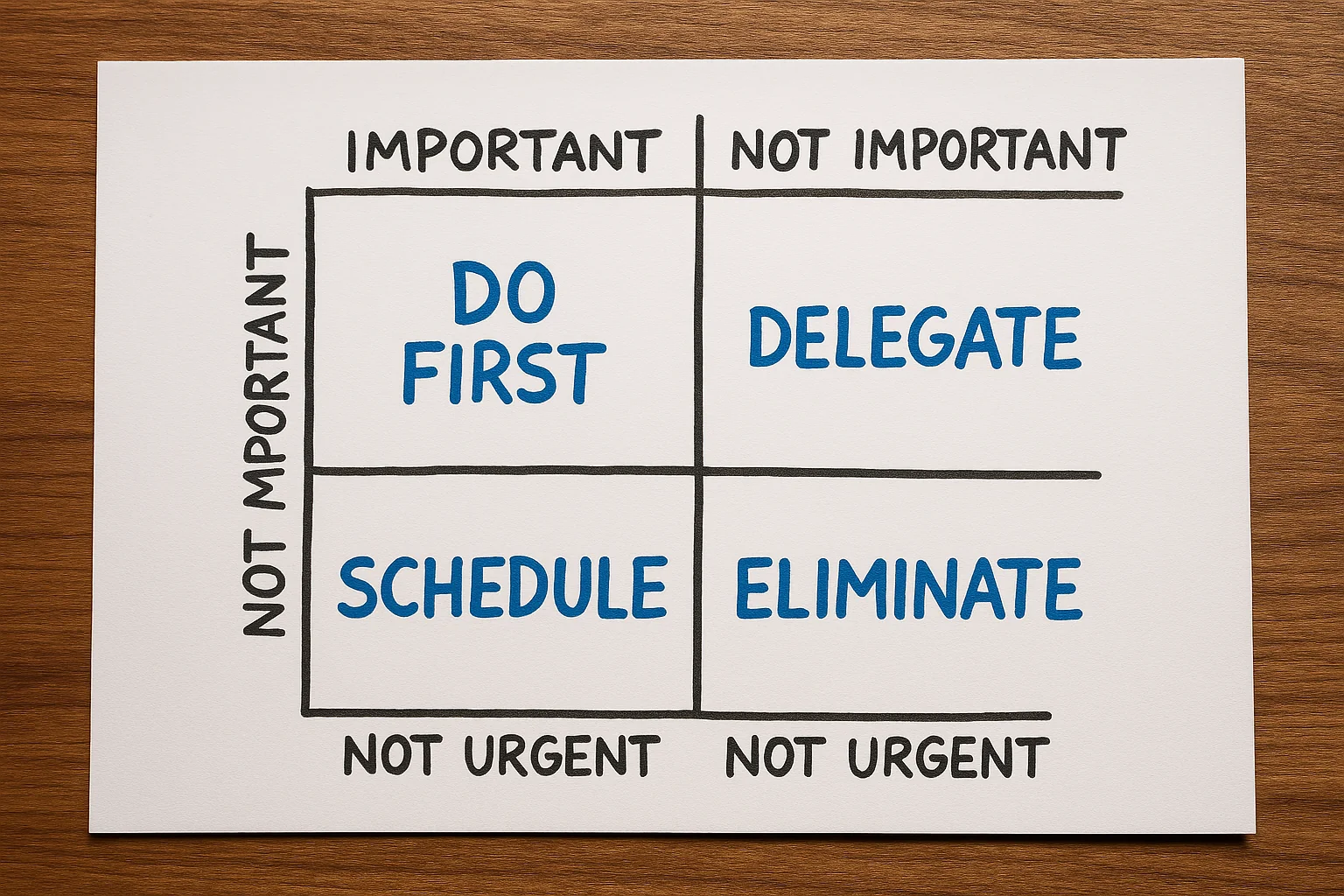Introduction
Have you ever ended your day feeling exhausted but unproductive?
That’s the trap of confusing urgency with importance.
The Eisenhower Matrix is one of the most powerful time management tools — and it will transform how you work, decide, and live.
The Origins of the Eisenhower Matrix
Dwight D. Eisenhower, a five-star general and former U.S. President, made critical decisions daily — in both military and political arenas.
To handle pressure, he developed a mental system to distinguish what was urgent from what was truly important.
Years later, this thinking became a visual matrix — simple and brutally effective.
Understanding the 4 Quadrants
The matrix is based on two key factors: urgency and importance.
Their combination creates four zones of action:
Quadrant 1: Urgent and Important
→ Act immediately.
Tasks that demand your focus now and carry serious consequences.
This is where crises, tight deadlines, and emergencies live. Ignore this quadrant at your own risk.
Quadrant 2: Important but Not Urgent
→ Plan and prioritize.
This is where real productivity happens.
Here lie strategy, goal setting, learning, relationship-building, health.
The more time you spend here, the less time you’ll spend in quadrant 1.
Quadrant 3: Urgent but Not Important
→ Delegate.
These tasks feel pressing but don’t move the needle.
Interruptions, shallow meetings, emails others can handle.
Free yourself by assigning or automating them.
Quadrant 4: Neither Urgent nor Important
→ Eliminate.
These are distractions disguised as rest.
Mindless scrolling, random web browsing, busywork.
This quadrant quietly steals your potential.
How to Use the Matrix Daily
- Do a brain dump: list everything you need to do.
- Evaluate: ask for each task — is it urgent? is it important?
- Sort into the matrix.
- Take action:
- Do what’s urgent and important.
- Schedule what’s important but not urgent.
- Delegate what’s urgent but not important.
- Cut what adds no value.
Real-Life Applications
- Entrepreneurs use it to avoid “fake work.”
- Students apply it to focus on strategic study, not just busywork.
- Leaders train their teams to know what deserves attention — and what doesn’t.
Pro Tips
- Review your matrix weekly.
- Use colors to mark each quadrant.
- Combine it with digital tools like Trello, Notion, or ClickUp.
- Teach it to your team — collective clarity starts with individual focus.
Conclusion: Prioritization Is Power
The Eisenhower Matrix isn’t just a productivity tool — it’s a mindset shift.
It teaches you that not everything that screams is worth your energy.
And by focusing on what’s truly important, you build real momentum — every single day.
Scientific References
- Covey, S. R. (2004). The 7 Habits of Highly Effective People.
- Drucker, P. F. (2006). The Essential Drucker.
- Gomes, F. M., & Souza, D. C. (2023). Research on time management and task prioritization in Brazilian companies.
- Oliveira, C. R. et al. (2022). Productivity analysis using the Eisenhower Matrix. Brazilian Journal of Management.
